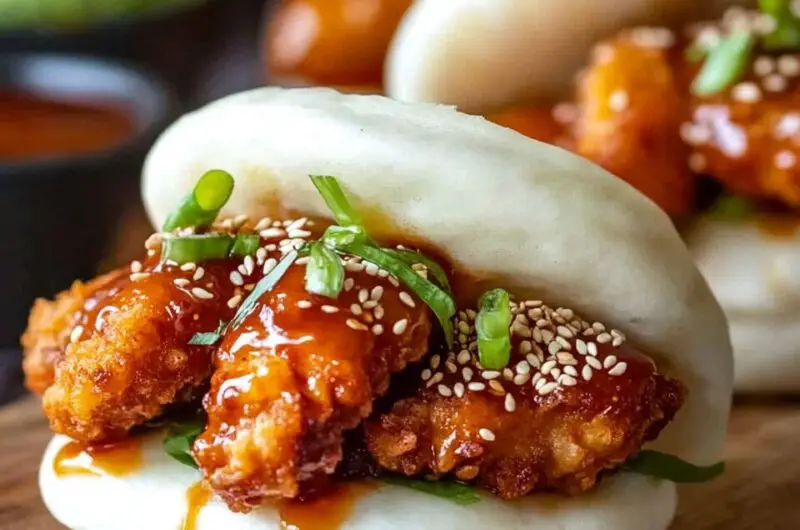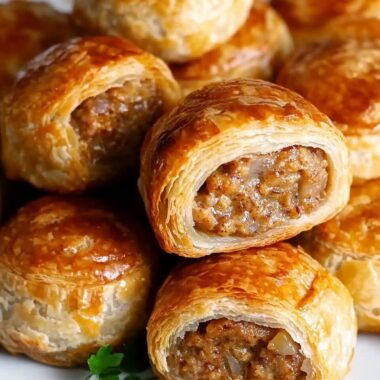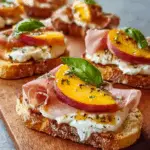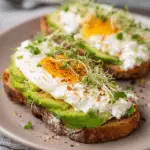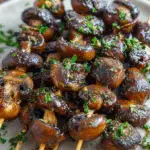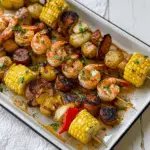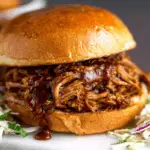A Harmony of Flavors and Cultures
This dish is a perfect representation of modern fusion cuisine. The bao bun, traditionally Chinese and known for its soft, steamed texture, serves as a neutral yet slightly sweet canvas. It pairs exceptionally well with Korean fried chicken, which is beloved for its ultra-crispy coating and complex flavor, often balancing heat with sweetness and umami. The result is a well-rounded bite that’s savory, spicy, sweet, and satisfying. It’s not just food—it’s an experience that transports you from Seoul’s bustling street stalls to a trendy Asian fusion eatery.
Why Korean Fried Chicken is So Addictive
Korean fried chicken, or “chikin,” is prepared differently from its Western counterparts. It’s double-fried for extra crispiness and coated in a sauce that’s typically sticky, tangy, and mildly spicy. The glaze used in this recipe includes gochujang (Korean red chili paste), honey, garlic, soy sauce, and sesame oil, creating a bold umami profile with just the right amount of kick. This flavor-packed glaze clings to every crevice of the fried chicken, making each bite intensely flavorful.
The Allure of Fluffy Bao Buns
Bao buns are a wonder in themselves. Made with a yeast-based dough enriched with milk, sugar, and butter, they’re soft, slightly sweet, and steamed rather than baked or fried. This gives them their distinctive cloud-like texture that’s light yet satisfying. The dough is folded over before steaming to create a pocket, making it ideal for stuffing with various fillings. In this case, it cradles the saucy chicken while offering a pleasant textural contrast.
Balance in Every Bite
What makes these bao buns so remarkable is the careful balance of textures and flavors. The soft bun contrasts beautifully with the crunchy chicken. The spicy-sweet glaze plays off the cool crunch of lettuce and radish. The tangy Korean mayo and sesame seeds on top add creaminess and nuttiness to round it all out. It’s a carefully orchestrated harmony that’s more than just delicious—it’s memorable.
Perfect for Entertaining or Elevated Weeknight Dinners
Whether you’re hosting a dinner party or just treating yourself, these bao buns make an impressive dish. The preparation may involve several components, but each step can be planned ahead—dough can be made and proofed in advance, chicken can marinate overnight, and the glaze can be prepped before the final fry. When you’re ready to serve, simply fry the chicken, steam the buns, assemble, and let your guests be wowed. They’re also a great way to turn an ordinary evening into a restaurant-quality experience at home.
Customizable to Fit Your Taste
Another great feature of this dish is its versatility. Don’t eat chicken? Try crispy tofu, shrimp, or mushrooms as a filling. Adjust the spice level in the glaze to suit your heat tolerance. You can also experiment with additional toppings like pickled carrots, kimchi, cucumber ribbons, or a drizzle of sriracha. For a more indulgent take, add a slice of cheese or a fried egg. The bao bun is a blank canvas just waiting for your culinary creativity.
Nutritional Profile and Considerations
While these bao buns are undeniably indulgent, they do provide a fair nutritional balance. The chicken offers a solid source of protein, and the use of fresh vegetables like cabbage, lettuce, and radishes brings in vitamins, fiber, and a refreshing crunch. The sauce, while flavorful, is high in sodium and sugar, so it’s best enjoyed in moderation. Each assembled bun is estimated to provide between 300–450 calories, depending on your portion size and specific ingredients used.
Cooking Tips for the Best Results
To ensure perfect bao buns, let your dough proof thoroughly until light and airy. Kneading properly and steaming gently are both key to achieving the soft, fluffy texture. When frying the chicken, make sure your oil is at the right temperature—hot enough to crisp, but not so hot that the coating burns before the chicken cooks through. Use a thermometer if possible, or test with a small piece first. The glaze should be thick but pourable; if it reduces too much, thin it slightly with water or a dash of soy sauce.
Presentation and Pairing Suggestions
These bao buns are naturally show-stopping, but a thoughtful presentation can elevate them even more. Arrange them on a serving board or tray with extra garnishes—sesame seeds, lime wedges, shredded scallions, or tiny bowls of extra Korean mayo for dipping. Pair them with side dishes like Asian slaw, kimchi, or pickled cucumbers. For drinks, consider chilled soju, ginger beer, or a light citrusy cocktail to complement the spicy-sweet flavor profile.
Why You’ll Fall in Love with This Recipe
Korean Fried Chicken Bao Buns are more than a trendy food—they’re a celebration of bold taste, irresistible texture, and culinary craftsmanship. They’re approachable enough for home cooks, yet impressive enough to serve at a dinner party. Each element—from the soft bao to the crunchy chicken and sticky glaze—contributes to a dish that’s layered, fun, and deeply satisfying. These are the kinds of recipes that turn into traditions—dishes that people request again and again because they’re that good.
Conclusion
Korean Fried Chicken Bao Buns are the ultimate fusion comfort food, offering an exciting medley of spicy, sweet, savory, and soft textures that come together in one handheld delight. They require a bit of planning and prep, but the payoff is more than worth it. Each element of this dish—the tender bao, the crispy chicken, the sticky glaze, and the fresh garnishes—works in perfect harmony to deliver a standout meal. Whether you’re looking to impress friends or indulge in something extraordinary, these bao buns deliver an unforgettable culinary experience.

